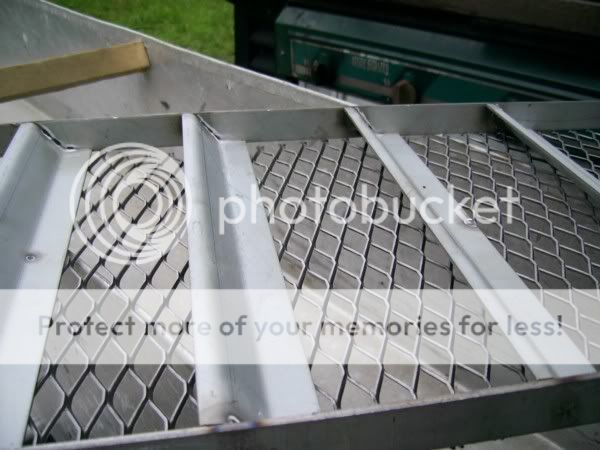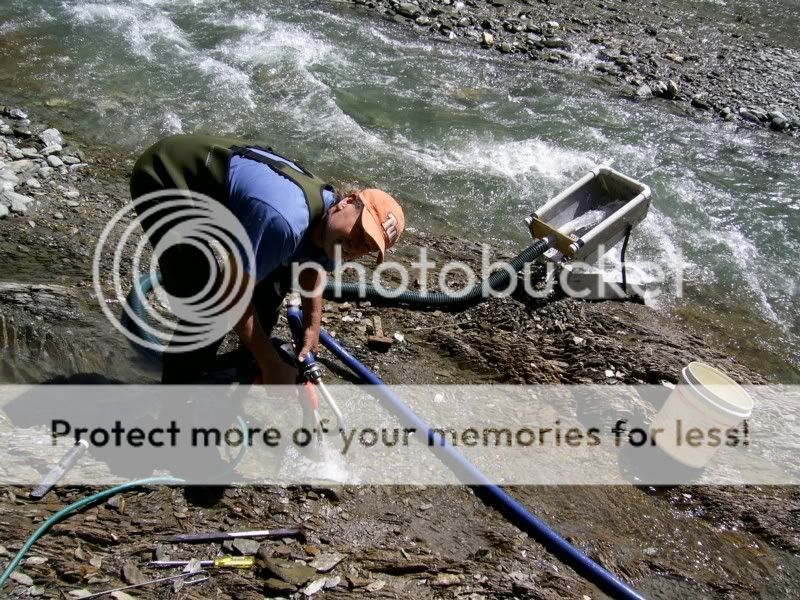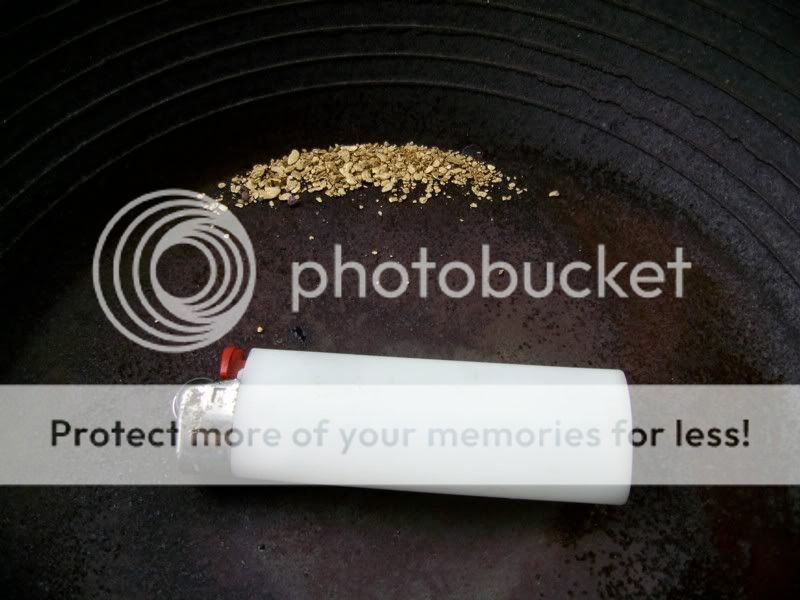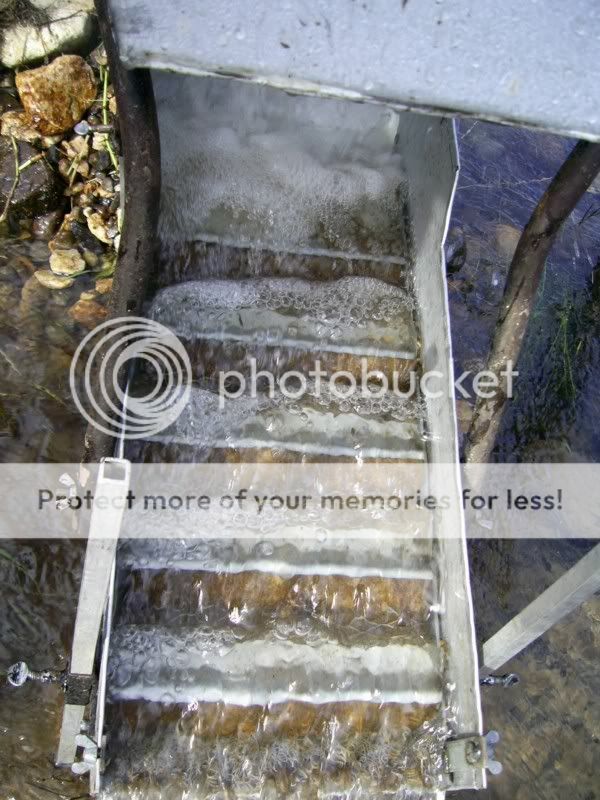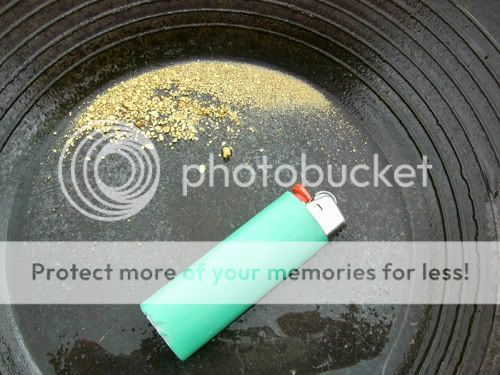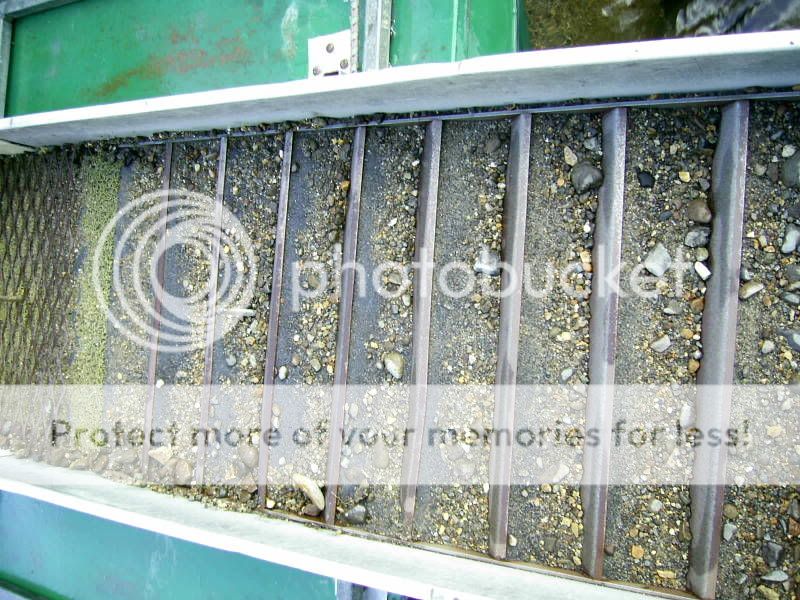Hi Guys, As I have said before you realy only need enough water to wash the material on down the box otherwise you will lose fine gold. Yes a dredge will put more water down your box even a 2", & in a way you need that extra bit of flow to make sure the bigger stones wash on down & out your box. A 2" will put stones of nearly 2" size down your box & to get those on down & out your box you need a bit of grunt in the water but expect to lose fine gold. I made a little classifier header box for my 2" so that there was no material going down the box larger than 3/4". The change of water direction took the sting out of the velocity of the water going down the box & over the riffles & made for good fine gold recovery. This is the same box as in the river sluice above with the classifier header box fitted
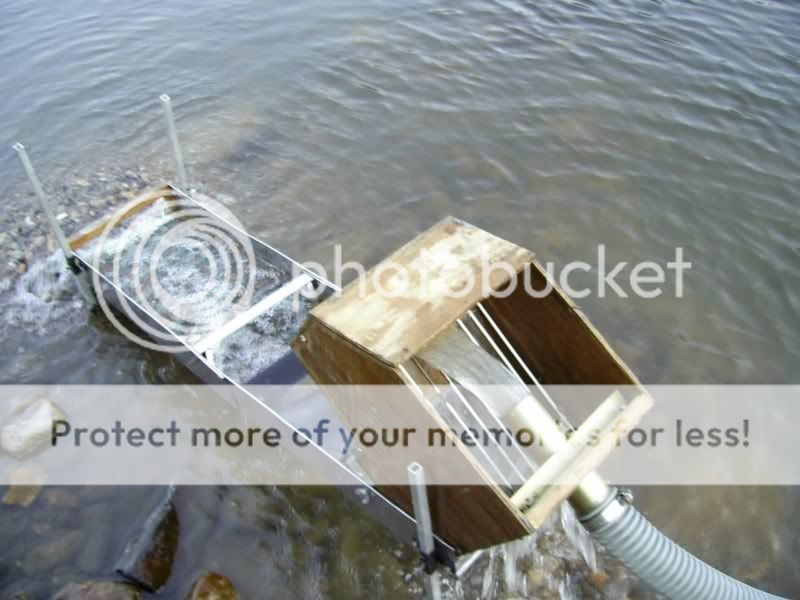
I have played around with all sorts of riffle sizes & configureations & learnt that to get most of the gold & especially the fine stuff is to preclassify the material & use a water flow that is just enough to run the material down the box & a riffle size that is just big enough for a gentler flow of water. I have even used a large expaneded mesh as a riffle system on its own in a river here in New Zealand that has pretty fine gold & heaps of fine black sand. Tailings from a whole lot of old stamper batteries that discharged their waste into this river system in the early days. They also lost heaps of gold in their tailings. This required a gentle flow of water, so as to not wash on the very fine gold. Therefore I needed a low riffle so the water flow would still wash the waste material on but not strong enough to wash out the fine gold.
This is the set up with riffles fitted
This is with the large expanded mesh as riffles.
Water flow turned off & the fine black sand on the down stream side of the large expanded mesh & very little bigger material. "V" ribbed rubber mat at the head
Fine gold recovered
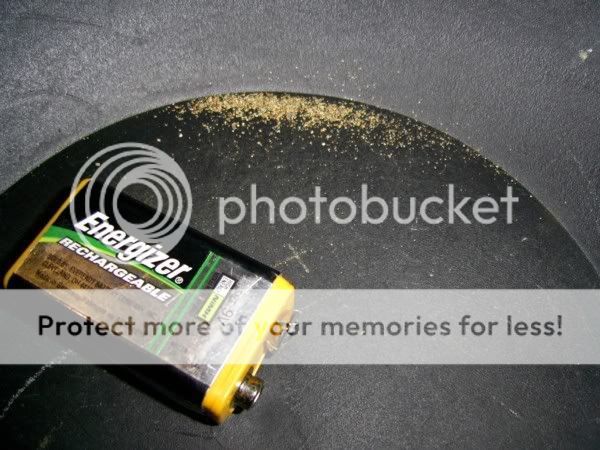
You need to weigh up the size of gold that you are hoping to recover from the stream, or what size gold the stream has you are going to work. If it is mostly fine & flakey then you need slow water, smaller riffles & spaced about 3-4" apart so the slower water can keep the material from over loading the riffles. If the gold is a bit bigger then you can use a higher riffle & spaced closer together & a stronger flow of water. It is important to have that shuffling, vibrating action between the riffles in this situation. You cant really have one box that will suit all situations. Unless you have different riffle set ups that you can chop & change. "V" ribbed matting is good to use as is a fine expanded mesh. Or a combination of all. Here is a little 32" x 9" box I made with ribbed rubber mat at the head of the riffles. This shows up any gold getting caught up in it or passing over it. An indicator that gold is actualy going down you box. If you arent seeing any gold here then you need to dig somewhere else. After the "V" ribbed matting is the riffles that are on top of a fine mesh that is on top of astro turf type carpet. Being a short box it is really only a slow water box & the riffles are only about half an inch high & spaced about 3.5" apart. Works well for fine gold as long as the flow isnt too strong
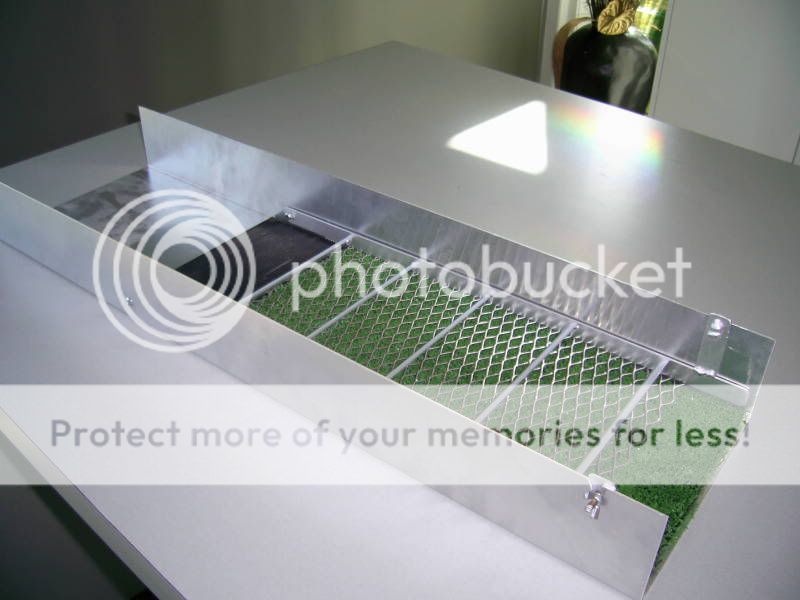
If you are going to run faster water then you will need a longer box as well. My box above with the wooden header box is 44" x 10" & it will handle material shoveled in to it but you need to pick out the bigger stones.
Happy golding
JW




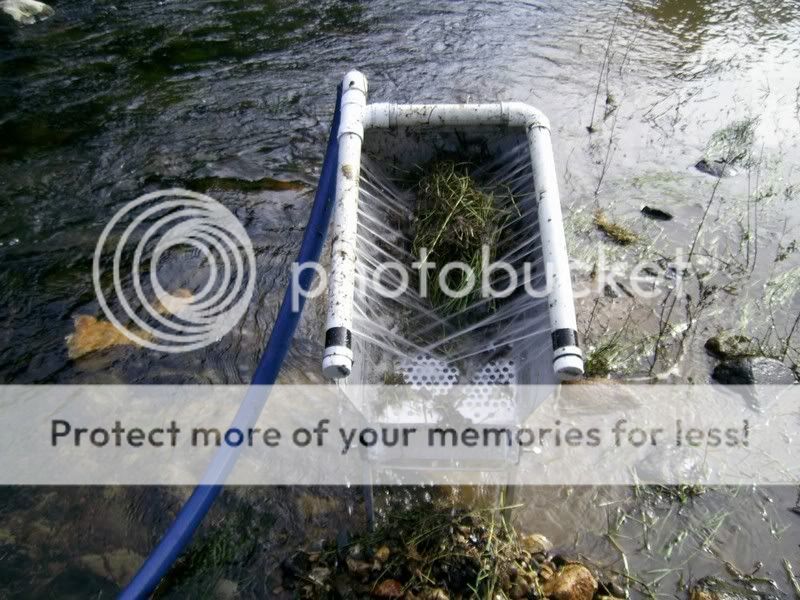
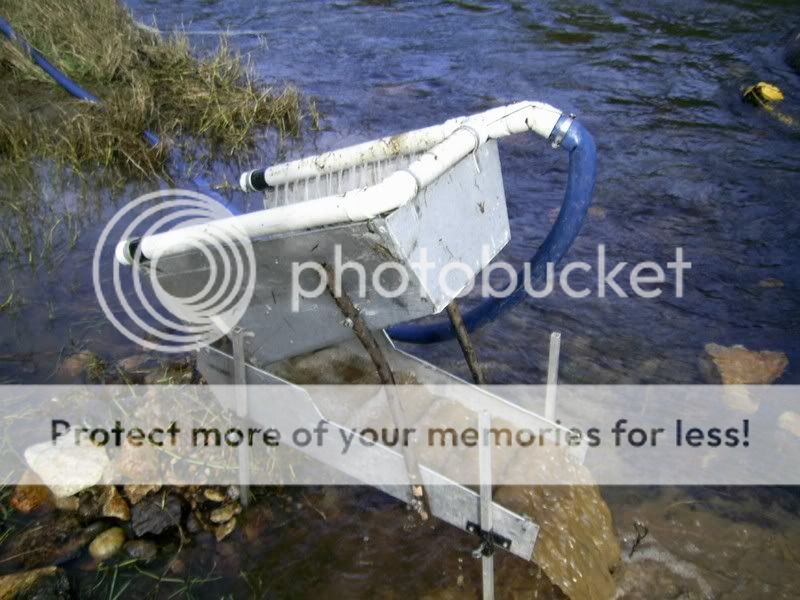
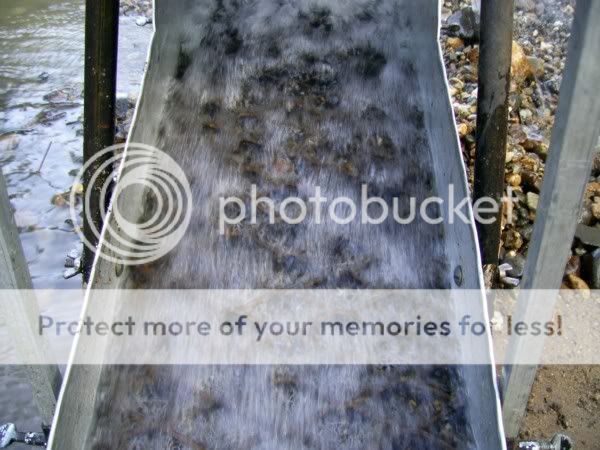




 And second, its a bear to get tuned just right. Up here in Oregon we have all kinds of different gold and I've hit so many areas that certain setups just seem to work better than others. In the Bohemia area, you'd be hard pressed to find anything larger than the head of a pin, and thats where this setup works well. Very little coarse material to run through the sluice and very few larger pieces to worry about.
And second, its a bear to get tuned just right. Up here in Oregon we have all kinds of different gold and I've hit so many areas that certain setups just seem to work better than others. In the Bohemia area, you'd be hard pressed to find anything larger than the head of a pin, and thats where this setup works well. Very little coarse material to run through the sluice and very few larger pieces to worry about.

